Charles Lamb
ON THE GENIUS AND CHARACTER OF HOGARTH;
WITH SOME REMARKS ON A PASSAGE IN THE WRITINGS OF THE LATE MR. BARRY
First published in The Reflector, II, no. 3 (1811), 61-77.
One of the earliest and noblest enjoyments I had when a boy, was in
the contemplation of those capital prints by Hogarth, the Harlot's
and Rake's Progresses, which, along with some others, hung upon the walls of a great hall in an old-fashioned house in ----shire, and
seemed the solitary tenants (with myself) of that antiquated and
life-deserted apartment.
Recollection of the manner in which those prints used to affect me
has often made me wonder, when I have heard Hogarth described as a
mere comic painter, as one of those whose chief ambition was to
raise a laugh. To deny that there are throughout the prints which I have mentioned circumstances introduced of a laughable tendency,
would be to run counter to the common notions of mankind; but to
suppose that in their ruling character they appeal chiefly to the
risible faculty, and not first and foremost to the very heart of man,
its best and most serious feelings, would be to mistake no less
grossly their aim and purpose. A set of severer Satires (for they are
not so much Comedies, which they have been likened to, as they are
strong and masculine Satires) less mingled with anything of mere fun,
were never written upon paper, or graven upon copper. They resemble
Juvenal, or the satiric touches in Timon of Athens.
I was pleased with the reply of a gentleman, who being asked which
book he esteemed most in his library, answered,--"Shakspeare:" being
asked which he esteemed next best, replied,-- [62] "Hogarth." His graphic
representations are indeed books: they have the teeming, fruitful,
suggestive meaning of words. Other pictures we look at,--his prints we read.
In pursuance of this parallel, I have sometimes entertained myself
with comparing the Timon of Athens of Shakspeare (which I have
just mentioned) and Hogarth's Rake's Progress together. The story,
the moral, in both is nearly the same. The wild course of riot and
extravagance, ending in the one with driving the Prodigal from the
society of men into the solitude of the deserts, and in the other
with conducting the Rake through his several stages of dissipation
into the still more complete desolations of the mad-house, in the
play and in the picture, are described with almost equal force and
nature. The levee of the Rake, which forms the subject of the second
plate in the series, is almost a transcript of Timon's levee in the
opening scene of that play. We find a dedicating poet, and other
similar characters, in both.

In the scene in Bedlam, which terminates the Rake's Progress, we find the same assortment of the ludicrous with the terrible. Here is desperate madness, the overturning of originally strong thinking faculties, at which we shudder, as we contemplate the duration and pressure of affliction which it must have asked to destroy such a building;--and here is the gradual hurtless lapse into idiocy, of faculties, which at their best of times never having been strong, we look upon the consummation of their decay with no more of pity than is consistent with a smile. The mad tailor, the poor driveller that has gone out of his wits (and truly he appears to have had no great journey to go to get past their confines) for the love of Charming Betty Careless,--. these half-laughable, scarce-pitiable objects, take off from the horror which the principal figure would of itself raise, at the same time that they assist the feeling of the scene by contributing to the general notion of its subject:--
"Madness, thou chaos of the brain,
What art, that pleasure giv'st and pain?
Tyranny of Fancy's reign!
[63] Mechanic Fancy, that can build
Vast labyrinths and mazes wild,
With rule disjointed, shapeless measure,
Fill'd with horror, fill'd with pleasure!
Shapes of horror, that would even
Cast doubts of mercy upon heaven;
Shapes of pleasure, that but seen,
Would split the shaking sides of Spleen."[1]
[Footnote 1: Lines inscribed under the plate]
Is it carrying the spirit of comparison to excess to remark, that in the poor kneeling weeping female who accompanies her seducer in his sad decay, there is something analogous to Kent, or Caius, as he delights rather to be called, in Lear,--the noblest pattern of virtue which even Shakspeare has conceived,--who follows his royal master in banishment, that had pronounced his banishment, and forgetful at once of his wrongs and dignities, taking on himself the disguise of a menial, retains his fidelity to the figure, his loyalty to the carcass, the shadow, the shell, and empty husk of Lear?
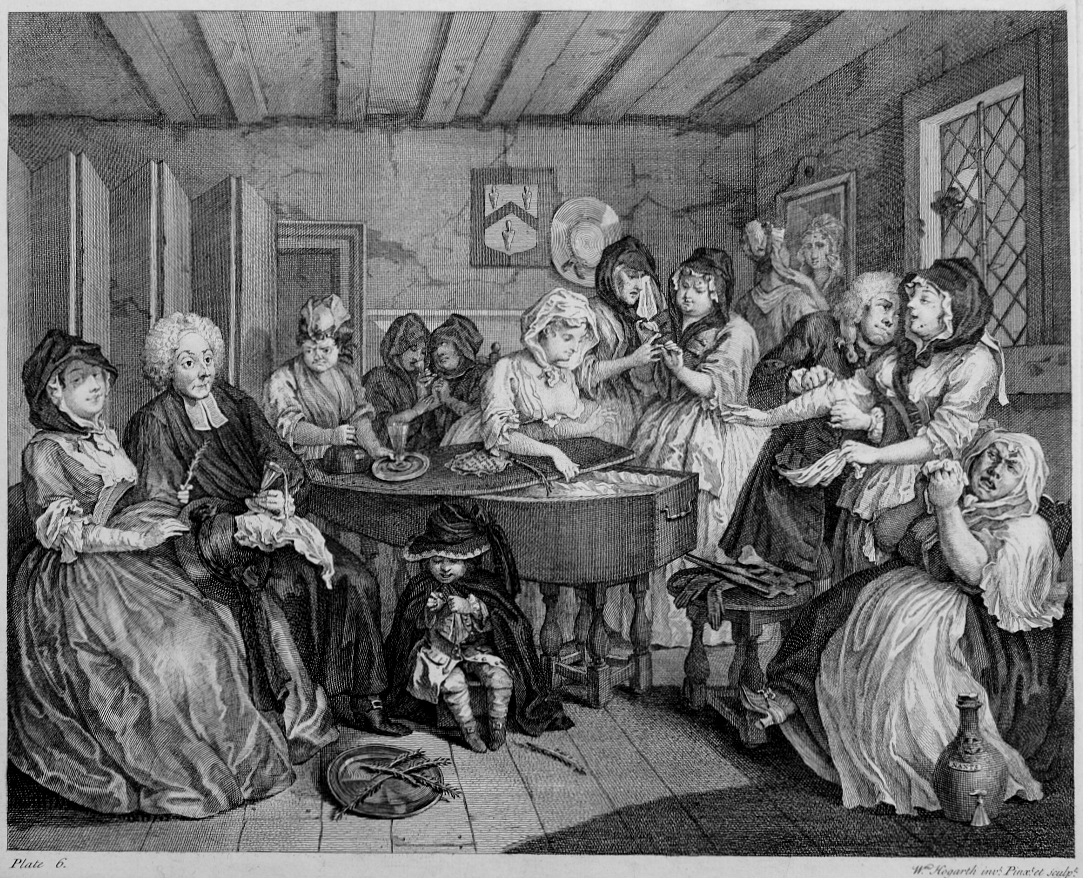
[64] It is easy to laugh at such incongruities as are met together in this picture,--incongruous objects being of the very essence of laughter,--but surely the laugh is far different in its kind from that thoughtless species to which we are moved by mere farce and grotesque. We laugh when Ferdinand Count Fathom, at the first sight of the white cliffs of Britain, feels his heart yearn with filial fondness towards the land of his progenitors, which he is coming to fleece and plunder,--we smile at the exquisite irony of the passage,--but if we are not led on by such passages to some more salutary feeling than laughter, we are very negligent perusers of them in book or picture.
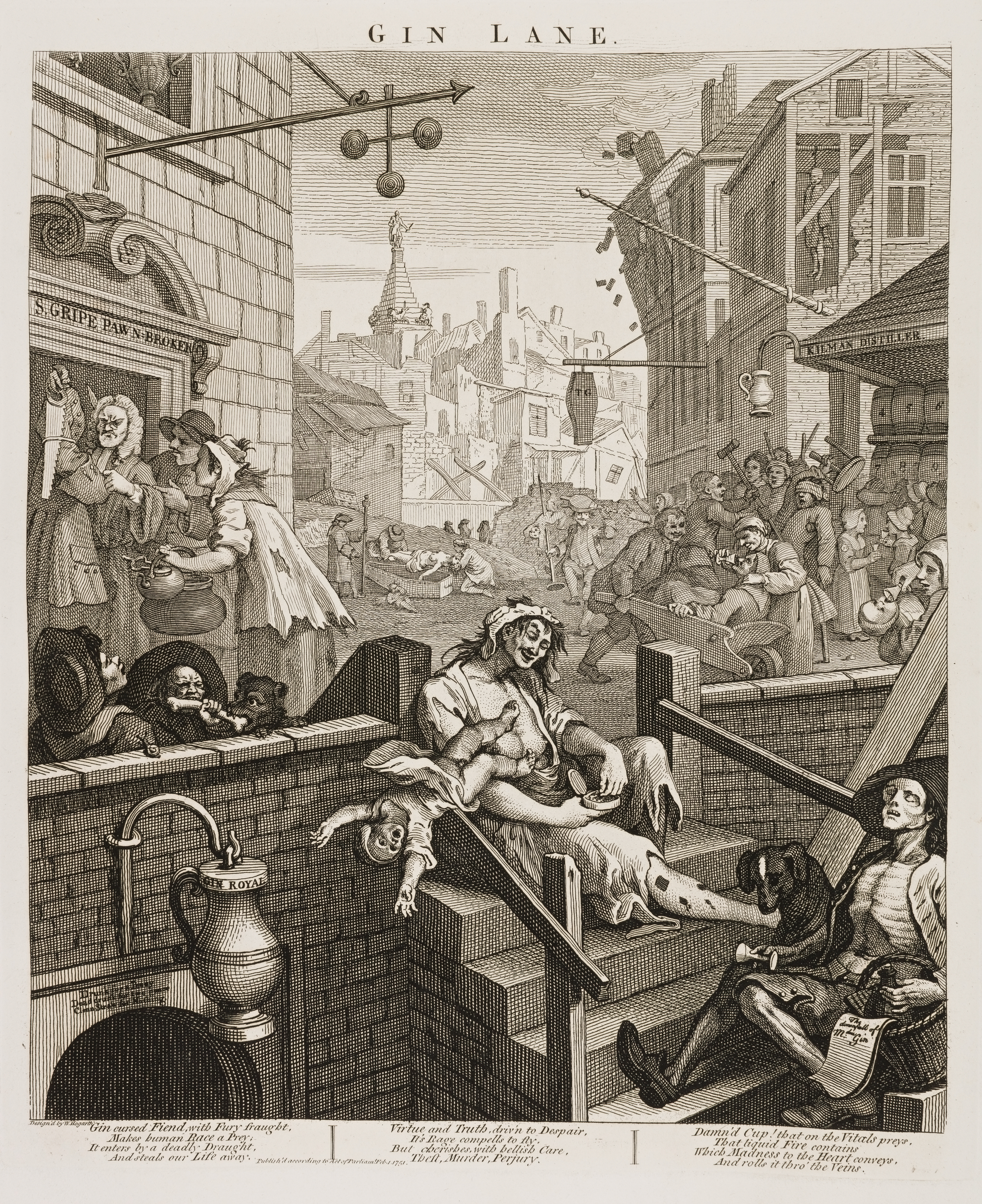
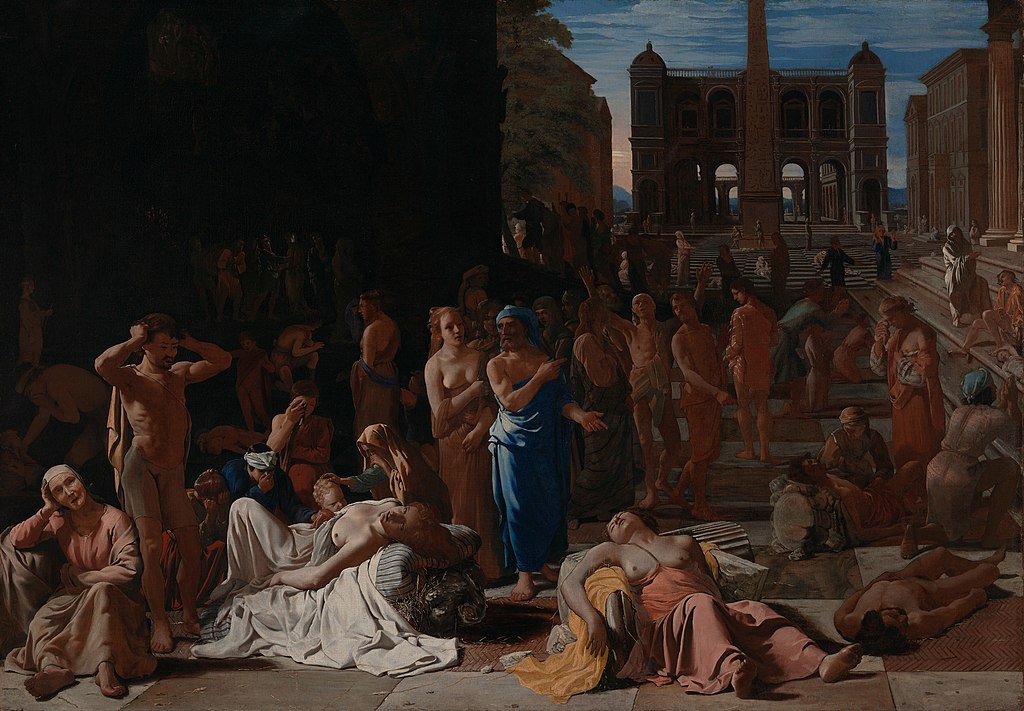
"For much imaginary work was there,
Conceit deceitful, so compact, so kind,
That for Achilles' image stood his spear,
Grip'd in an armed hand; himself behind
Was left unseen, save to the eye of mind:
A hand, a foot, a face, a leg, a head,
Stood for the whole to be imagined."
[Footnote 1: At the late Mr. Hope's, in Cavendish Square]
This he well calls imaginary work, where the spectator must meet the artist in his conceptions half way; and it is peculiar to the confidence of high genius alone to trust so much to spectators or readers. Lesser artists show everything distinct and full, as they require an object to be made out to themselves before they can comprehend it.
When I think of the power displayed in this (I will not hesitate to say) sublime print, it seems to me the extreme narrowness of system alone, and of that rage for classification, by which, in matters of taste at least, we are perpetually perplexing, instead of arranging, our ideas, that would make us concede to the work of Poussin above mentioned, and deny to this of Hogarth, the name of a grand serious composition.
We are forever deceiving ourselves with names and theories. We call one man a great historical painter, because he has taken for his subjects kings or great men, or transactions over which time has thrown a grandeur. We term another the painter of common life, and set him down in our minds for an artist of an inferior class, without reflecting whether the quantity of thought [66] shewn by the latter may not much more than level the distinction which their mere choice of subjects may seem to place between them; or whether, in fact, from that very common life a great artist may not extract as deep an interest as another man from that which we are pleased to call history.
I entertain the highest respect for the talents and virtues of Reynolds, but I do not like that his reputation should overshadow and stifle the merits of such a man as Hogarth, nor that to mere names and classifications we should be content to sacrifice one of the greatest ornaments of England.

[Footnote 1: The first perhaps in all Hogarth for serious expression. That which comes next to it, I think, is the jaded morning countenance of the debauchee in the second plate of the Marriage Alamode, which lectures on the vanity of pleasure as audibly as anything in Ecclesiastes.]



[Footnote 1: "There are of madmen, as there are of tame,
All humor'd not alike. We have here some
So apish and fantastic, play with a feather;
And though 'twould grieve a soul to see God's image
So blemish'd and defac'd, yet do they act
Such antick and such pretty lunacies,
That, spite of sorrow, they will make you smile.
Others again we have, like angry lions,
Fierce as wild bulls, untameable as flies."Honest Whore.]
It is the force of these kindly admixtures which assimilates the scenes of Hogarth and of Shakspeare to the drama of real life, where no such thing as pure tragedy is to be found; but merriment and infelicity, ponderous crime and feather-light vanity, like twiformed
births, disagreeing complexions of one intertexture, perpetually
unite to show forth motley spectacles to the world. Then it is that
the poet or painter shows his art, when in the selection of these
comic adjuncts he chooses such circumstances as shall relieve,
contrast with, or fall into, without forming a violent opposition to
his principal object. Who sees not that the Grave-digger in Hamlet, the Fool in Lear, have a kind of correspondency to, and fall in with, the subjects which they seem to interrupt: while the comic stuff in Venice Preserved, and the doggerel nonsense of the Cook and his poisoning associates in the Rollo of Beaumont and Fletcher, are pure, irrelevant, impertinent discords,--as bad as the
quarrelling dog and cat under the table of the Lord and the
Disciples at Emmaus of Titian?
Not to tire the reader with perpetual reference to prints which he may not be fortunate enough to possess, it may be sufficient to
remark, that the same tragic cast of expression and incident, blended
in some instances with a greater alloy of comedy, characterizes his
other great work, the Marriage Alamode, as well as those less
elaborate exertions of his genius, the prints called Industry and
Idleness, the Distrest Poet, &c., forming, with the Harlot's and Rake's Progresses, the most considerable, if not the largest class of his productions,--enough surely to rescue Hogarth from the imputation of being a mere buffoon, or one whose general aim was only´to shake the sides.
There remains a very numerous class of his performances, the object of which must be confessed to be principally comic. But in all of
them will be found something to distinguish them from the droll
productions of Bunbury and others. They have this difference, that we
do not merely laugh at, we are led into long trains of reflection by
them. In this respect they resemble the characters of Chaucer's
Pilgrims, which have strokes of humor in them enough to designate
them for the most part as comic, but our strongest feeling still is
wonder at the comprehensiveness of genius which could crowd, as poet
and painter have done, into one small canvas so many diverse yet
co-operating materials.
The faces of Hogarth have not a mere momentary interest, as in caricatures, or those grotesque phisiognomies which we sometimes
catch a glance of in the street, and, struck with their whimsicality,
wish for a pencil and the power to sketch them down; and forget them
again as rapidly,--but they are permanent abid- [69] ing ideas. Not the
sports of nature, but her necessary eternal classes. We feel that we
cannot part with any of them, lest a link should be broken.
It is worthy of observation, that he has seldom drawn a mean or insignificant countenance.[1] Hogarth's mind was eminently
reflective; and, as it has been well observed of Shakspeare, that he
has transfused his own poetical character into the persons of his
drama (they are all more or less poets) Hogarth has impressed a
thinking character upon the persons of his canvas. This remark must not be taken universally. The exquisite idiotism of the little gentleman in the bag and sword beating his drum in the print of the
Enraged Musician, would of itself rise up against so sweeping an assertion. But I think it will be found to be true of the generality of his countenances. The knife-grinder and Jew flute-player in the
plate just mentioned, may serve as instances instead of a thousand.
They have intense thinking faces, though the purpose to which they
are subservient by no means required it; but indeed it seems as if it
was painful to Hogarth to contemplate mere vacancy or insignificance.
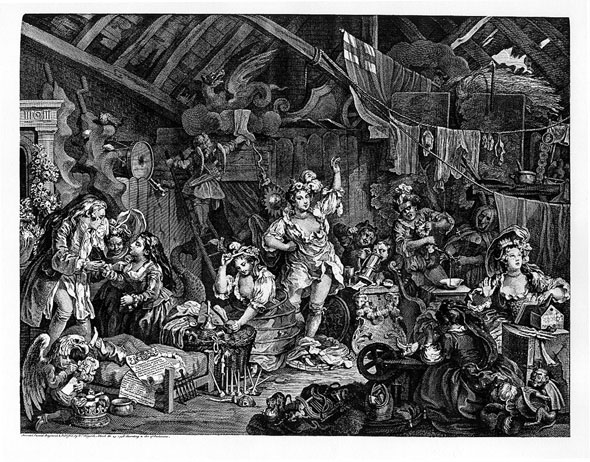
This reflection of the artist's own intellect from the faces of his characters, is one reason why the works of Hogarth, so much more than those of any other artist, are objects of meditation. Our intellectual natures love the mirror which gives them back their own likenesses. The mental eye will not bend long with delight upon vacancy.
Another line of eternal separation between Hogarth and the common painters of droll or burlesque subjects, with whom he is often confounded, is the sense of beauty, which in the most unpromising subjects seems never wholly to have deserted him. "Hogarth himself," says Mr. Coleridge,[1] from whom I have borrowed this observation, speaking of a scene which took place at Ratzeburg, "never drew a more ludicrous distortion, both of attitude and physiognomy, than this effect occasioned: nor was there wanting beside it one of those beautiful female faces which the same Hogarth, in whom the satirist never extinguished that love of beauty which belonged to him as a poet, so often and so gladly introduces as the central figure in a crowd of humorous deformities, which figure (such is the power of true genius) neither acts nor is meant to act as a contrast; but diffuses through all, and over [70] each of the group, a spirit of reconciliation and human kindness; and even when the attention is no longer consciously directed to the cause of this feeling, still blends its tenderness with our laughter: and thus prevents the instructive merriment at the whims of nature, or the foibles or humors of our fellow-men, from degenerating into the heart-poison of contempt or hatred." To the beautiful females in Hogarth, which Mr. C. has pointed out, might be added, the frequent introduction of children (which Hogarth seems to have taken a particular delight in) into his pieces. They have a singular effect in giving tranquillity and a portion of their own innocence to the subject. The baby riding in its mother's lap in the March to Finchley, (its careless innocent face placed directly behind the intriguing time-furrowed countenance of the treason-plotting French priest,) perfectly sobers the whole of that tumultuous scene. The boy mourner winding up his top with so much unpretending insensibility in the plate of the Harlot's Funeral, (the only thing in that assembly that is not a hypocrite,) quiets and soothes the mind that has been disturbed at the sight of so much depraved man and woman kind.
[Footnote 1: The Friend, No. XVI.]


"Notwithstanding Hogarth's merit does undoubtedly entitle him to an honorable place among the artists, and that his little compositions, considered as so many dramatic representations, abounding with humor, character, and extensive observations on the various incidents of low, faulty, and vicious life, are very ingeniously brought together, and frequently tell their own story with more facility than is often found in many of the elevated and more noble inventions of Raphael and other great men; yet it must be honestly confessed, that in what is called knowledge of the figure, foreigners have justly observed, that Hogarth is often so raw and unformed, as hardly to deserve the name of an artist. But this capital defect is not often perceivable, as examples of the naked and of elevated nature but rarely occur in his subjects, which are for the most part filled with characters that in their nature tend to deformity; besides his figures are small, and the jonctures, and other difficulties of drawing that might occur in their limbs, are artfully concealed with their clothes, rags, &c. But what would atone for all his defects, even if they were twice told, is his admirable fund of invention, ever inexhaustible in its resources; and his satire, which is always sharp and pertinent, and often highly moral, was (except in a few instances, where he weakly and meanly suffered his integrity to give way to his envy) seldom or never employed in a dishonest or unmanly way. Hogarth has been often imitated in his satirical vein, sometimes in his humorous: but very few have attempted to rival him in his moral walk. The line of art pursued by my very ingenious predecessor and brother Academician, Mr. Penny, is quite [71] distinct from that of Hogarth, and is of a much more delicate and superior relish; he attempts the heart, and reaches it, whilst Hogarth's general aim is only to shake the sides; in other respects no comparison can be thought of, as Mr. Penny has all that knowledge of the figure and academical skill which the other wanted. As to Mr. Bunbury, who had so happily succeeded in the vein of humor and caricatura, he has for some time past altogether relinquished it, for the more amiable pursuit of beautiful nature: this, indeed, is not to be wondered at, when we recollect that he has, in Mrs. Bunbury, so admirable an exemplar of the most finished grace and beauty continually at his elbow. But (to say all that occurs to me on this subject) perhaps it may be reasonably doubted, whether the being much conversant with Hogarth's method of exposing meanness, deformity, and vice, in many of his works, is not rather a dangerous, or, at least, a worthless pursuit; which, if it does not find a false relish and a love of and search after satire and buffoonery in the spectator, is at least not unlikely to give him one. Life is short; and the little leisure of it is much better laid out upon that species of art which is employed about the amiable and the admirable, as it is more likely to be attended with better and nobler consequences to ourselves. These two pursuits in art may be compared with two sets of people with whom we might associate; if we give ourselves up to the Footes, the Kenricks, &c. we shall be continually busied and paddling in whatever is ridiculous, faulty, and vicious in life; whereas there are those to be found with whom we should be in the constant pursuit and study of all that gives a value and a dignity to human nature." [Account of a Series of Pictures in the Great Room of the Society of Arts, Manufactures, and Commerce, at the Adelphi, by James Barry, R.A., Professor of Painting to the Royal Academy, reprinted in the last quarto edition of his works.]
"----It must be honestly confessed, that in what is called knowledge of the figure, foreigners have justly observed," &c.
It is a secret well known to the professors of the art and mystery of criticism, to insist upon what they do not find in a man's works, and to pass over in silence what they do. That Hogarth did not draw the naked figure so well as Michael Angelo might be allowed, especially as "examples of the naked," as Mr. Barry acknowledges, "rarely (he might almost have said never) occur in his subjects;" and that his figures under their draperies do not discover all the fine graces of an Antinous or an Apollo, may be conceded likewise; perhaps it was more suitable to his purpose to represent the average forms of mankind in the mediocrity (as Mr. Burke expresses it) of the age in which he lived: but that his figures in general, and in his best subjects, are so glaringly incorrect as is here insinuated, I dare trust my own eye so far as positively to deny the fact. And there is one part of the figure in which Hogarth is allowed to have excelled, which these foreigners seem to have overlooked, or perhaps calculating from its proportion to the whole (a seventh or an eighth, I forget which,) deemed it of trifling importance; I mean the human face; a small part, reckoning by geographical inches, in the map of man's body, but here it is that the painter of expression must condense the [72] wonders of his skill, even at the expense of neglecting the "jonctures and other difficulties of drawing in the limbs," which it must be a cold eye that, in the interest so strongly demanded by Hogarth's countenances, has leisure to survey and censure.
"The line of art pursued by my very ingenious predecessor and brother Academician, Mr. Penny."
The first impression caused in me by reading this passage was an eager desire to know who this Mr. Penny was. This great surpasser of Hogarth in the "delicacy of his relish," and the "line which he pursued," where is he, what are his works, what has he to show? In vain I tried to recollect, till by happily putting the question to a friend who is more conversant in the works of the illustrious obscure than myself, I learnt that he was the painter of a Death of Wolfe which missed the prize the year that the celebrated picture of West on the same subject obtained it; that he also made a picture of the Marquis of Granby relieving a Sick Soldier; moreover, that he was the inventor of two pictures of Suspended and Restored Animation, which I now remember to have seen in the Exhibition some years since, and the prints from which are still extant in good men's houses. This, then, I suppose, is the line of subjects in which Mr. Penny was so much superior to Hogarth. I confess I am not of that opinion. The relieving of poverty by the purse, and the restoring a young man to his parents by using the methods prescribed by the Humane Society, are doubtless very amiable subjects, pretty things to teach the first rudiments of humanity; they amount to about as much instruction as the stories of good boys that give away their custards to poor beggar-boys in children's books. But, good God! is this milk for babes to be set up in opposition to Hogarth's moral scenes, his strong meat for men? As well might we prefer the fulsome verses upon their own goodness to which the gentlemen of the Literary Fund annually sit still with such shameless patience to listen, to the satires of Juvenal and Persius; because the former are full of tender images of Worth relieved by Charity, and Charity stretching out her hand to rescue sinking Genius, and the theme of the latter is men's crimes and follies with their black consequences--forgetful meanwhile of those strains of moral pathos, those sublime heart-touches, which these poets (in them chiefly showing themselves poets) are perpetually darting across the otherwise appalling gloom of their subject--consolatory remembrancers, when their pictures of guilty mankind have made us even to despair for our species, that there is such a thing as virtue and moral dignity in the world, that her unquenchable spark is not utterly out--refreshing ad- [73] monitions, to which we turn for shelter from the too great heat and asperity of the general satire.
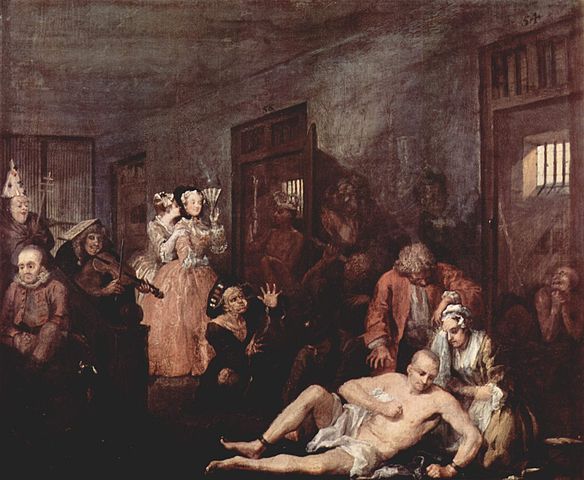
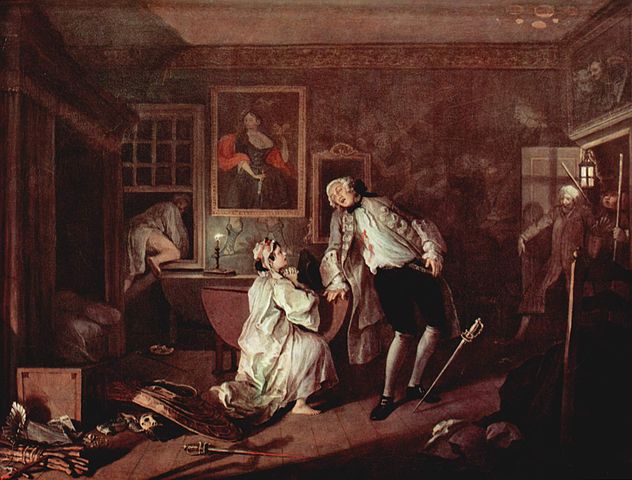
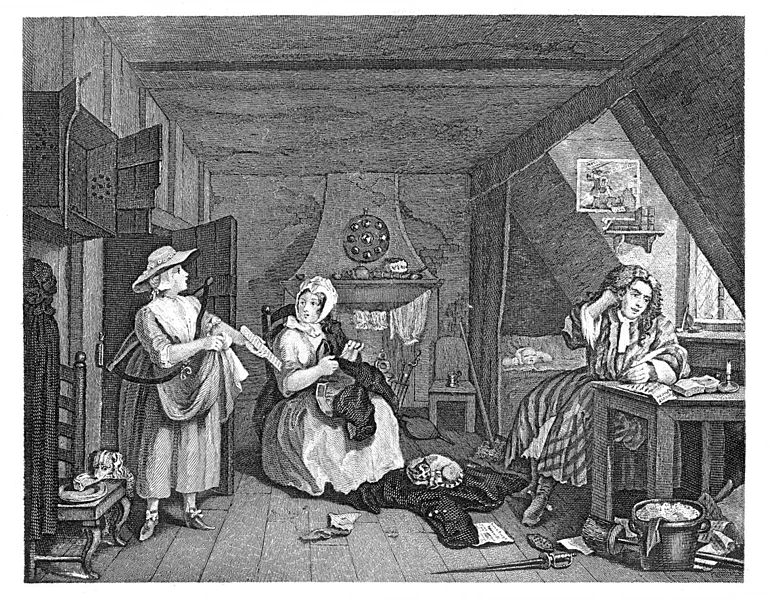

"Hogarth's method of exposing meanness, deformity, and vice,
paddling in whatever is ridiculous, faulty, and vicious."
A person unacquainted with the works thus stigmatized would [74] be apt to imagine that in Hogarth there was nothing else to be found but subjects of the coarsest and most repulsive nature. That his imagination was naturally unsweet, and that he delighted in raking into every species of moral filth. That he preyed upon sore places only, and took a pleasure in exposing the unsound and rotten parts of human nature:--whereas, with the exception of some of the plates of the Harlot's Progress, which are harder in their character than any of the rest of his productions (the Stages of Cruelty I omit as mere worthless caricatures, foreign to his general habits, the offspring of his fancy in some wayward humor), there is scarce one of his pieces where vice is most strongly satirized, in which some figure is not introduced upon which the moral eye may rest satisfied; a face that indicates goodness, or perhaps mere good-humoredness and carelessness of mind (negation of evil) only, yet enough to give a relaxation to the frowning brow of satire, and keep the general air from tainting. Take the mild, supplicating posture of patient Poverty in the poor woman that is persuading the pawnbroker to accept her clothes in pledge, in the plate of Gin Lane, for an instance. A little does it, a little of the good nature overpowers a world of bad. One cordial honest laugh of a Tom Jones absolutely clears the atmosphere that was reeking with the black putrefying breathings of a hypocrite Blifil. One homely expostulating shrug from Strap warms the whole air which the suggestions of a gentlemanly ingratitude from his friend Random had begun to freeze. One "Lord bless us!" of Parson Adams upon the wickedness of the times, exorcises and purges off the mass of iniquity which the world-knowledge of even a Fielding could cull out and rake together. But of the severer class of Hogarth's performances, enough, I trust, has been said to show that they do not merely shock and repulse; that there is in them the "scorn of vice" and the "pity" too; something to touch the heart, and keep alive the sense of moral beauty; the "lacrymae rerum," and the sorrowing by which the heart is made better. If they be bad things, then is satire and tragedy a bad thing; let us proclaim at once an age of gold, and sink the existence of vice and misery in our speculations: let us
"----wink, and shut our apprehensions uplet us make believe with the children, that everybody is good and happy; and, with Dr. Swift, write panegyrics upon the world.
From common sense of what men were and are:"
But that larger half of Hogarth's works, which were painted more for entertainment than instruction (though such was the suggestiveness of his mind that there is always something to be learnt from them), his humorous scenes,--are they such as merely to disgust and set us against our species?
[75] The confident assertions of such a man as I consider the late Mr. Barry to have been, have that weight of authority in them which staggers at first hearing, even a long preconceived opinion. When I read his pathetic admonition concerning the shortness of life, and how much better the little leisure of it were laid out upon "that species of art which is employed about the amiable and the admirable;" and Hogarth's "method," proscribed as a "dangerous or worthless pursuit," I began to think there was something in it; that I might have been indulging all my life a passion for the works of this artist, to the utter prejudice of my taste and moral sense; but my first convictions gradually returned, a world of good-natured English faces came up one by one to my recollection, and a glance at the matchless Election Entertainment, which I have the happiness to have hanging up in my parlor, subverted Mr. Barry's whole theory in an instant.
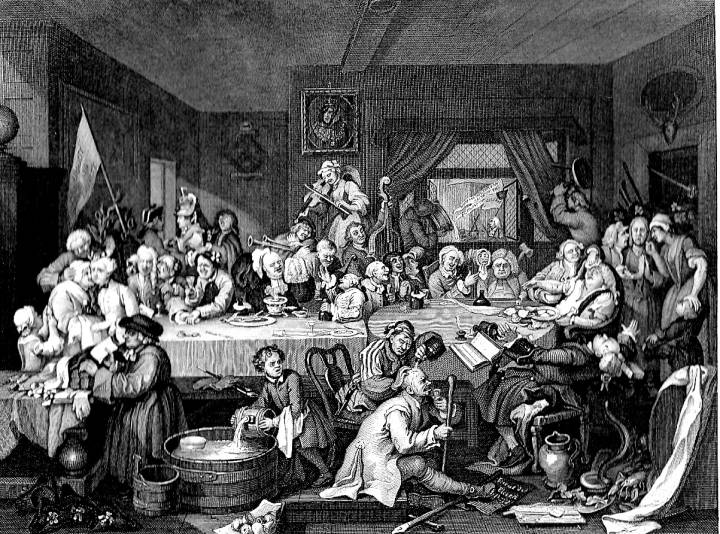
I can see nothing "dangerous" in the contemplation of such scenes as this, or the Enraged Musician, or the Southwark Fair, or twenty other pleasant prints which come crowding in upon my recollection, in which the restless activities, the diversified bents and humors, the blameless peculiarities of men, as they deserve to be called, rather than their "vices and follies," are held up in a laughable point of view. All laughter is not of a dangerous or soul-hardening tendency. There is the petrifying sneer of a demon which excludes and kills Love, and there is the cordial laughter of a man which implies and cherishes it. What heart was ever made the worse by joining in a hearty laugh at the simplicities of Sir Hugh Evans or Parson Adams, where a sense of the ridiculous mutually kindles and is kindled by a perception of the amiable? That tumultuous harmony of singers that are roaring out the words, "The world shall bow to the Assyrian throne," from the opera of Judith, in the third plate of the series [77] called the Four Groups of Heads; which the quick eye of Hogarth must have struck off in the very infancy of the rage for sacred oratorios in this country, while "Music yet was young;" when we have done smiling at the deafening distortions, which these tearers of devotion to rags and tatters, these takers of heaven by storm, in their boisterous mimicry of the occupation of angels, are making,--what unkindly impression is left behind, or what more of harsh or contemptuous feeling, than when we quietly leave Uncle Toby and Mr. Shandy riding their hobby-horses about the room? The conceited, long-backed Sign-painter, that with all the self-applause of a Raphael or Corregio, (the twist of body which his conceit has thrown him into has something of the Corregiesque in it,) is contemplating the picture of a bottle, which he is drawing from an actual bottle that hangs beside him, in the print of Beer Street,--while we smile at the enormity of the self-delusion, can we help loving the good-humor and self-complacency of the fellow? would we willingly wake him from his dream?
I say not that all the ridiculous subjects of Hogarth have, necessarily, something in them to make us like them; some are indifferent to us, some in their natures repulsive, and only made interesting by the wonderful skill and truth to nature in the painter; but I contend that there is in most of them that sprinkling of the better nature, which, like holy water, chases away and disperses the contagion of the bad. They have this in them, besides, that they bring us acquainted with the every-day human face,--they give us skill to detect those gradations of sense and virtue (which escape the careless or fastidious observer) in the countenances of the world about us; and prevent that disgust at common life, that taedium quotidianarum formarum, which an unrestricted passion for ideal forms and beauties is in danger of producing. In this, as in many other things, they are analogous to the best novels of Smollett or Fielding.